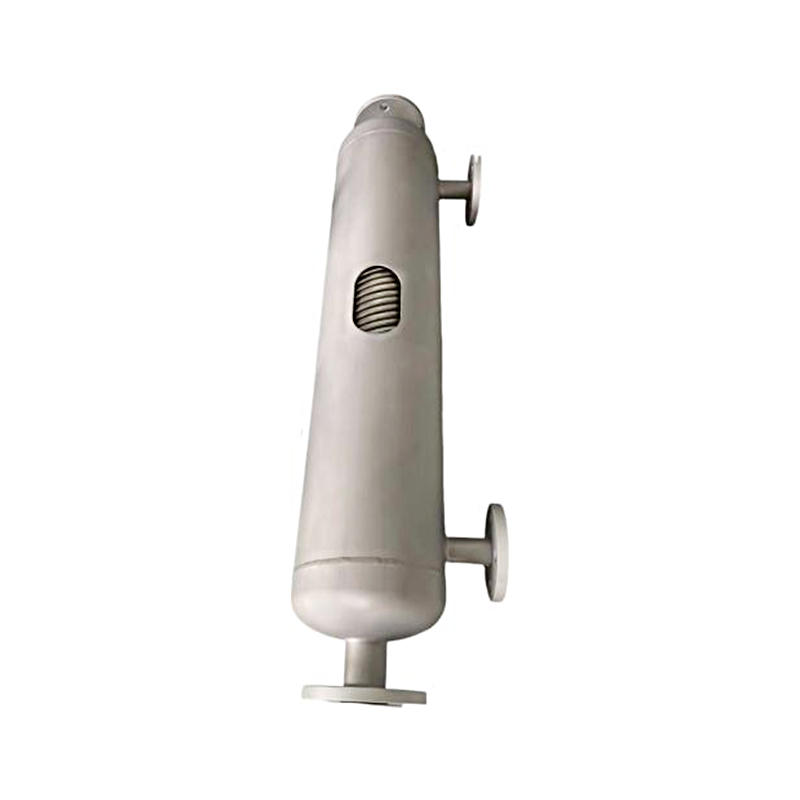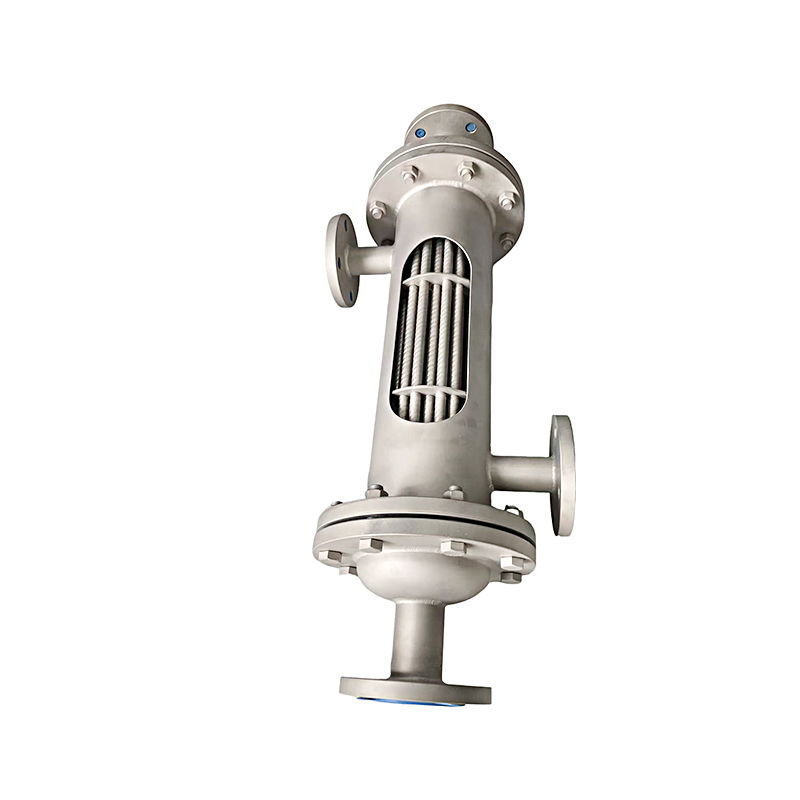Will the heat transfer efficiency of a corrosion-resistant silicon carbide heat exchanger decrease in corrosive media?
Release Time : 2025-11-06
In harsh industrial fields such as chemical engineering, metallurgy, and environmental protection, heat exchangers are constantly exposed to corrosive media containing strong acids, strong alkalis, high salts, or impurities. Traditional metal or graphite materials often struggle to balance corrosion resistance with efficient heat transfer. Corrosion-resistant silicon carbide heat exchangers, with their unique material properties, have become a key solution to this contradiction. However, users are naturally concerned about their ability to withstand corrosion, as heat transfer efficiency decreases over time under harsh conditions. Silicon carbide is not only corrosion-resistant but also maintains high heat transfer efficiency for a long time in corrosive environments due to its physicochemical stability.
The durability of heat transfer efficiency stems primarily from the inertness and density of silicon carbide itself. As a high-performance ceramic, silicon carbide undergoes almost no chemical reaction in most highly corrosive media, and its surface does not form oxide layers, passivation films, or corrosion products like metals. These byproducts are often the culprits behind the efficiency decline of traditional heat exchangers—they adhere to the heat transfer surface, forming a thermal resistance layer, like "wrapping a blanket" around the heat exchanger, severely hindering heat transfer. Silicon carbide, however, maintains a clean, smooth surface without any altered layer, allowing heat flow to directly penetrate the material itself, achieving stable and efficient energy exchange.
Secondly, silicon carbide possesses excellent thermal conductivity, ranking among the best in non-metallic materials. This means that even under corrosive conditions with high temperature differences and high flow rates, heat can be rapidly conducted from the hot side to the cold side, without becoming a bottleneck due to the material's inherently slow thermal conductivity. More importantly, this high thermal conductivity is not a short-term phenomenon but persists throughout its entire service life. Because the material structure does not deteriorate, pulverize, or crack in corrosive environments, its thermophysical properties remain almost constant, avoiding efficiency decline caused by material degradation.
The structural design further ensures long-term efficient operation. The integral sintered or weld-free integrated structure eliminates the risk of leakage or blockage caused by localized corrosion. The smooth, mirror-like inner walls of the flow channels not only reduce fluid resistance but also significantly minimize the possibility of fouling or crystal formation. Even with microparticles in the medium, silicon carbide's extremely high hardness and wear resistance resist erosion and maintain the flow channel geometry, ensuring that the flow rate and heat exchange area remain at their design specifications.
Thermal shock resistance is also a crucial factor in maintaining efficiency. In conditions of frequent temperature fluctuations, ordinary materials are prone to microcracks due to thermal expansion and contraction, which can then be penetrated by corrosive media, accelerating failure. Silicon carbide, however, possesses excellent thermal shock resistance, maintaining structural integrity during rapid heating and cooling, and avoiding performance degradation due to thermal fatigue.
Ultimately, the true advantage of a corrosion-resistant silicon carbide heat exchanger lies not in its peak efficiency at any given moment, but in its high efficiency stability throughout its entire lifespan. Unlike some devices that initially perform exceptionally well but then falter due to corrosion or scaling after a few months, it quietly operates for years, maintaining its original heat transfer capacity with minimal maintenance requirements. This consistent reliability makes it a solid safeguard for continuous production and energy efficiency in high-value, high-risk industrial processes. While other materials quietly decay and are rendered obsolete, silicon carbide continues to transfer heat efficiently—this is precisely its irreplaceable value.
The durability of heat transfer efficiency stems primarily from the inertness and density of silicon carbide itself. As a high-performance ceramic, silicon carbide undergoes almost no chemical reaction in most highly corrosive media, and its surface does not form oxide layers, passivation films, or corrosion products like metals. These byproducts are often the culprits behind the efficiency decline of traditional heat exchangers—they adhere to the heat transfer surface, forming a thermal resistance layer, like "wrapping a blanket" around the heat exchanger, severely hindering heat transfer. Silicon carbide, however, maintains a clean, smooth surface without any altered layer, allowing heat flow to directly penetrate the material itself, achieving stable and efficient energy exchange.
Secondly, silicon carbide possesses excellent thermal conductivity, ranking among the best in non-metallic materials. This means that even under corrosive conditions with high temperature differences and high flow rates, heat can be rapidly conducted from the hot side to the cold side, without becoming a bottleneck due to the material's inherently slow thermal conductivity. More importantly, this high thermal conductivity is not a short-term phenomenon but persists throughout its entire service life. Because the material structure does not deteriorate, pulverize, or crack in corrosive environments, its thermophysical properties remain almost constant, avoiding efficiency decline caused by material degradation.
The structural design further ensures long-term efficient operation. The integral sintered or weld-free integrated structure eliminates the risk of leakage or blockage caused by localized corrosion. The smooth, mirror-like inner walls of the flow channels not only reduce fluid resistance but also significantly minimize the possibility of fouling or crystal formation. Even with microparticles in the medium, silicon carbide's extremely high hardness and wear resistance resist erosion and maintain the flow channel geometry, ensuring that the flow rate and heat exchange area remain at their design specifications.
Thermal shock resistance is also a crucial factor in maintaining efficiency. In conditions of frequent temperature fluctuations, ordinary materials are prone to microcracks due to thermal expansion and contraction, which can then be penetrated by corrosive media, accelerating failure. Silicon carbide, however, possesses excellent thermal shock resistance, maintaining structural integrity during rapid heating and cooling, and avoiding performance degradation due to thermal fatigue.
Ultimately, the true advantage of a corrosion-resistant silicon carbide heat exchanger lies not in its peak efficiency at any given moment, but in its high efficiency stability throughout its entire lifespan. Unlike some devices that initially perform exceptionally well but then falter due to corrosion or scaling after a few months, it quietly operates for years, maintaining its original heat transfer capacity with minimal maintenance requirements. This consistent reliability makes it a solid safeguard for continuous production and energy efficiency in high-value, high-risk industrial processes. While other materials quietly decay and are rendered obsolete, silicon carbide continues to transfer heat efficiently—this is precisely its irreplaceable value.








